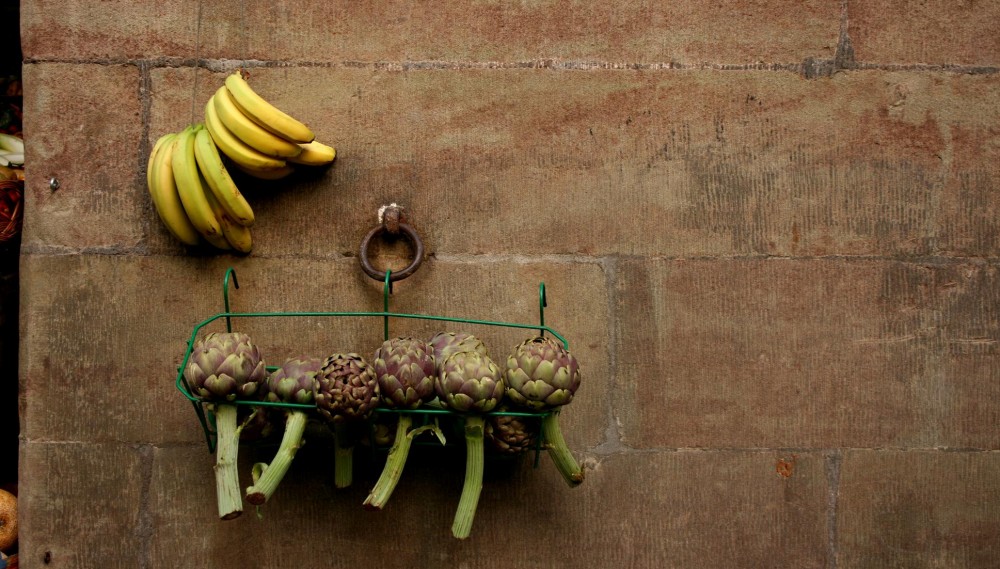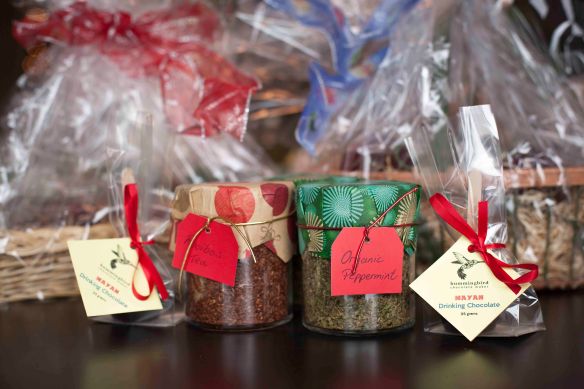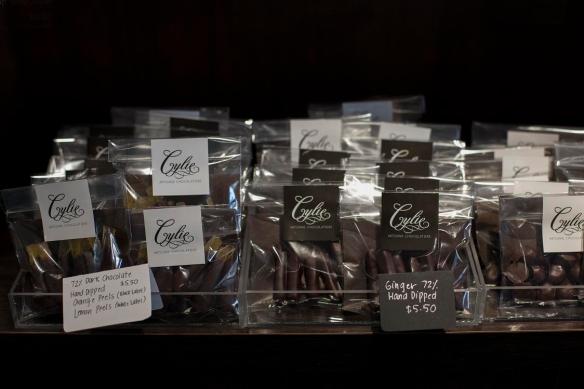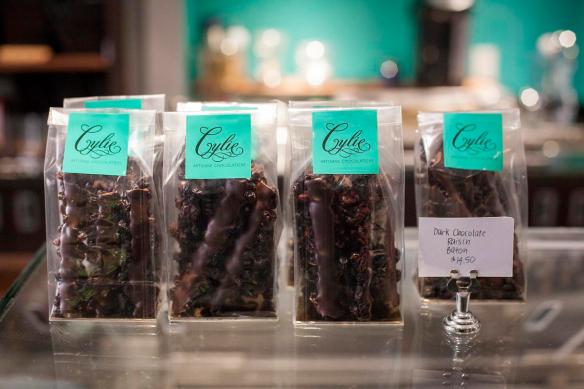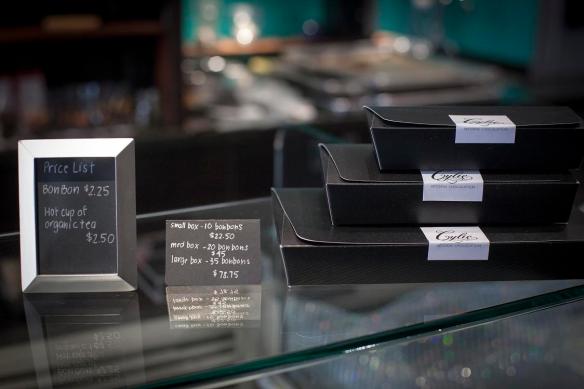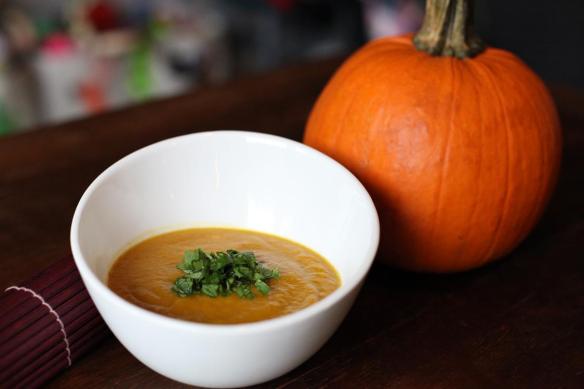My best friend triple-dog-dared me to prepare a Christmas dinner with local ingredients. And like poor Flick from A Christmas Story, I could not turn down such a challenge, although hopefully, unlike Flick, it would not be to my demise.
It is not impossible to prepare a meal in December with local ingredients, but for someone doing it for the first time I knew I had to pace myself. There were just some ingredients I was not prepared to exclude from my menu like my beloved salt and pepper or other fine ingredients like cumin, coriander, cinnamon or … chocolate. I was prepared to limit myself to what is “in season”, with of course a few exceptions.
This is a cold winter season, and I knew that vegetables, let alone fruit, would be hard to find. I made a list of what I wanted to serve with the turkey, keeping in mind what would be available this time of year: red cabbage, carrots, parsnips, roasted potatoes, and kale. I also decided that I wanted to greatly reduce the amount of refined carbohydrates such as sugar. I completely eliminated it from my recipe, which is perfect because if there are two things that are guaranteed local, they are honey and maple syrup.
Before I set out on my challenge, I had to determine what would constitute “local”. I already had the turkey from Aubin Farm which is located about 80 km from Ottawa (I used Parliament Hill as my point of origin). I also have some vegetables from Rainbow Heritage Garden which is about 132 km from Ottawa. I settled on food originating within a 150 km radius of Ottawa as constituting “local”. For someone who loves loves loves spice and chocolate, I decided that up to five pounds of food would be excluded from this challenge. That would be plenty to allow me to cook and bake with my favourite ingredients, and also fulfill my challenge (again, baby steps).
I then set out to buy my food, with an understanding of what is in season. A trip to the Ottawa Farmers’ Market and an order of winter vegetables from Rainbow Heritage Garden gave me a lot to work with. I didn’t find red cabbage or kale but I picked up green cabbage from Acorn Creek Garden Farm located in Carp. I also found apples (yay) which meant I could bake an apple crisp for dessert.
I did manage to get most items on my list, and added a few more: daikon, leeks and parsnips from Roots and Shoots Farm located in Manotick. I was also pleasantly surprised to find local cranberries. My best friend was convinced my challenge would be frustrated by the simple unavailability of local cranberries this time of year. Not only did I find them, they were harvested 15 minutes away from the market. Boom!
This is what I came home with:
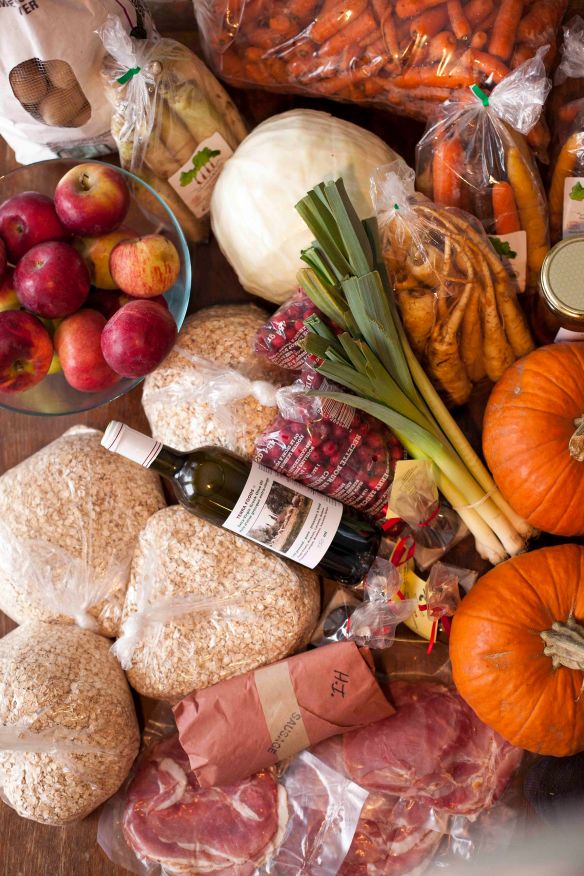
I also had a stash of vegetables from a delivery from Rainbow Heritage Garden earlier this month, including rainbow beets, onions, garlic, radishes, carrots, and potatoes. Unfortunately, I had already eaten up all my delicious kale from them so would have to do without something green on the table (if anything has satiated my desire for fresh vegetables this winter, it has been the delicious vegetables I ordered from Rainbow Heritage Garden which have lasted me several weeks already).
I was truly happy with my purchase from the local market, and began in earnest my menu for Christmas dinner:
Soup
Curried carrot and pumpkin with roasted pumpkin seeds
Main
Turkey and stuffing
Cranberry sauce
Braised red cabbage with apple and onion
Pumpkin purée
Roasted curried potatoes
Dessert
Apple crisp with vanilla maple ice cream
Chocolate peanut butter balls
This was truly a learning experience. For one, not all vegetables will survive through this cold winter. As my husband began to core the cabbage, he discovered this:
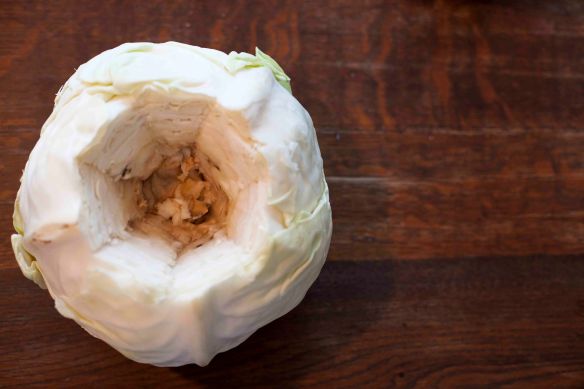
I was short one side dish, as I was not planning on cooking spoiled cabbage, but then I remembered a small red cabbage buried in the back of my fridge from months ago when Bryson Farms delivered fresh organic vegetables to our home. We cut open the cabbage with some trepidation, but were bursting with relief to find a crunchy, deep purple cabbage.

I was able to make my braised red cabbage with apple and onion after all.
The apples were mostly bruised, but who can expect to find fresh apples at the end of December. I was planning on cooking with them so it didn’t quite matter in the end.
Some ingredients were easier to substitute than others. Instead of using celery for the soup and stuffing, I used leeks which were grown in Manotick (Roots and Shoots). Since honey and maple syrup can be found year round, it was easier and healthier to use them instead of granulated or confectioners’ sugar, which I (regrettably) am used to baking with. I turned out a pretty tasty cranberry sauce having used honey instead of granulated sugar.
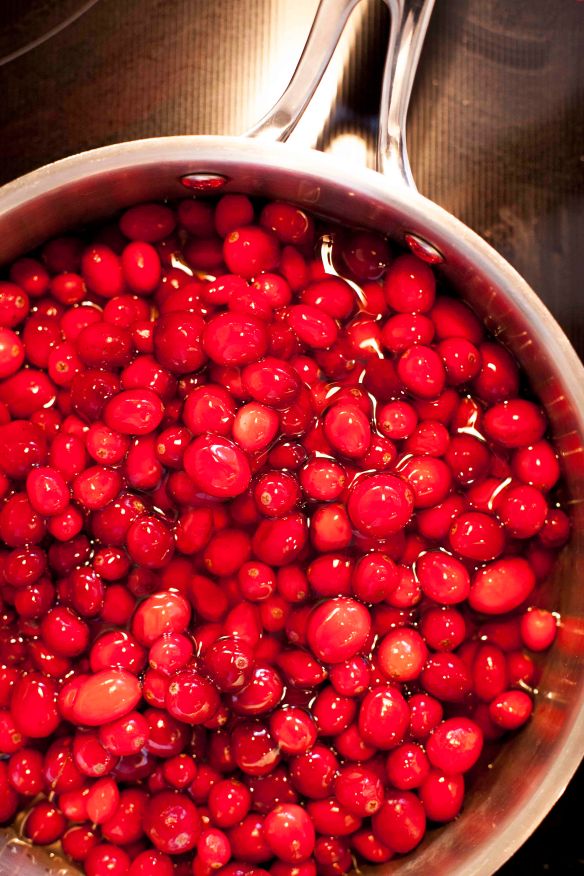
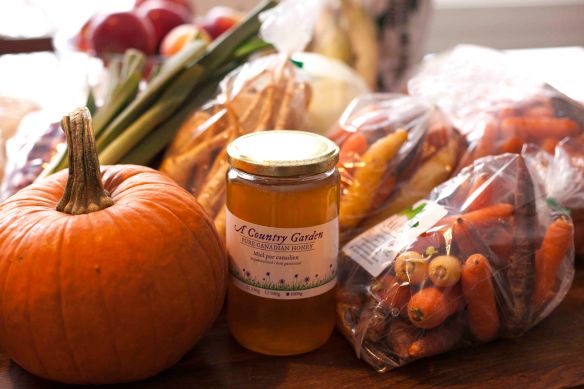
Other ingredients were trickier. I couldn’t find “local” cream or butter so had to resort to store bought. Although I could have baked my own bread for the stuffing using local ingredients, again store bought brought the added convenience.
I even attempted to serve “local” beverages. Local beer is probably just as accessible as honey or maple syrup and we always buy Beau’s Lug•Tread Lagered Ale which is located 101 km from Ottawa (although, I would have to check to see if their ingredients are also local).
We ended up with a full course meal, including beer, derived from mostly local ingredients. Not bad for a first try. Not only did the food contain healthier ingredients (honey and maple syrup instead of refined sugars, rolled oats instead of flour), it didn’t end up costing me an arm and a leg. Yes, the turkey, like any pasture-raised bird, was pricey (costing about $85.00 for 16lbs), but I saved A LOT on vegetables. I was able to find two delicious pumpkins for only $4.00.

I ended up making enough pumpkin soup to feed 11 people, as well as take some over to my in-laws, which fed an additional ten people.
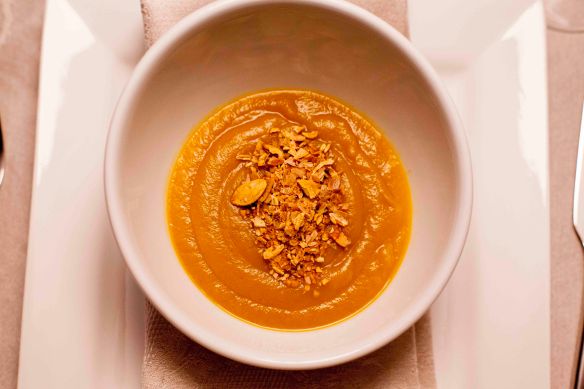
Once again, cooking with simple ingredients, can make for a delicious and healthy meal. As well, it never hurts to try new challenges that can teach and expand a deep appreciation and love for food.
